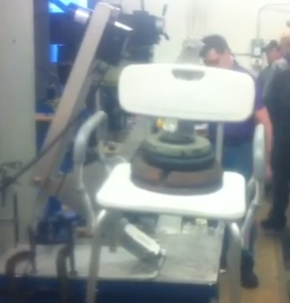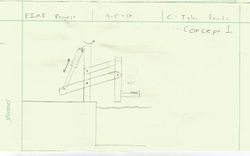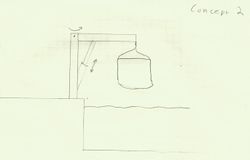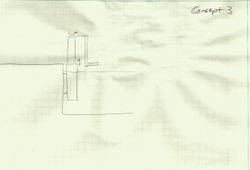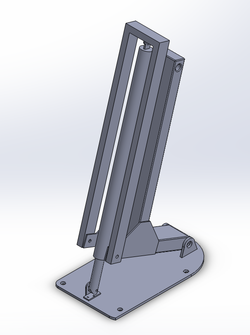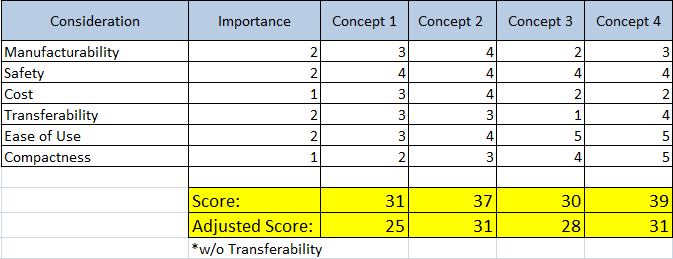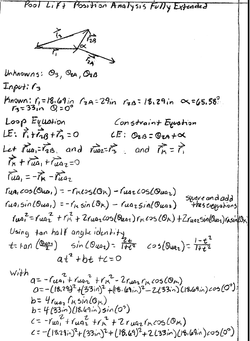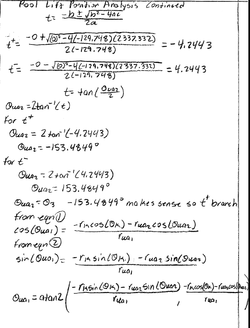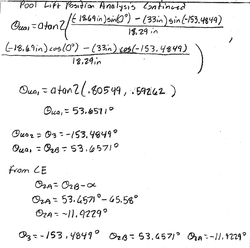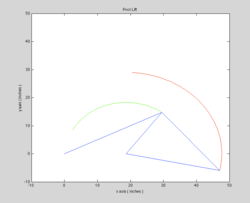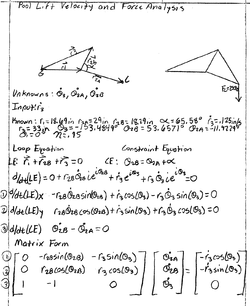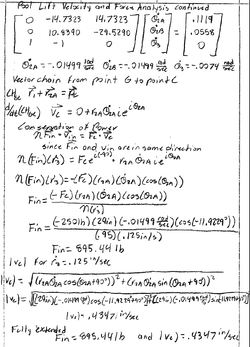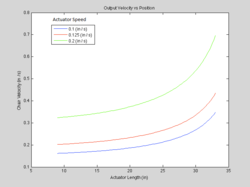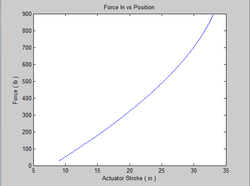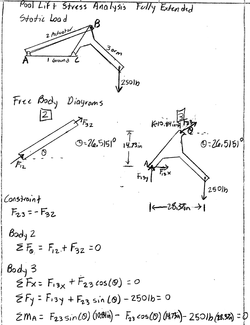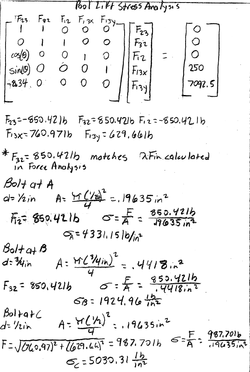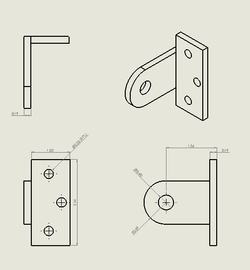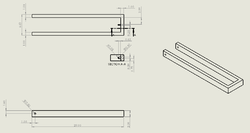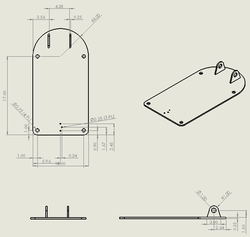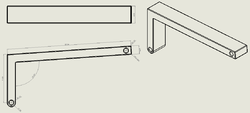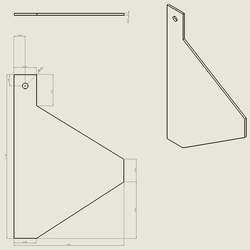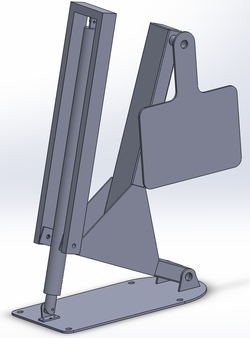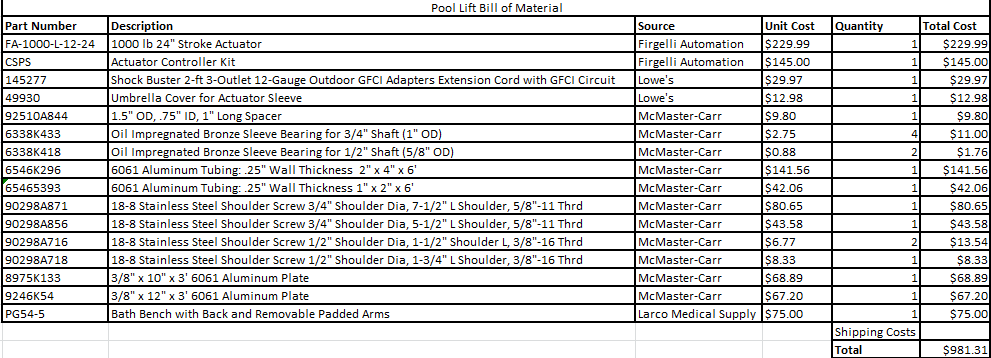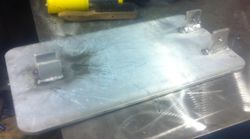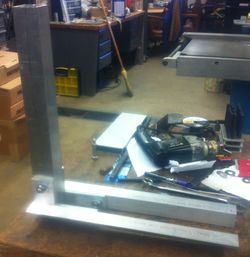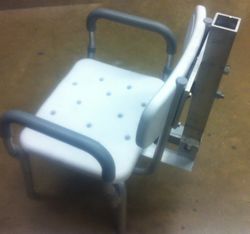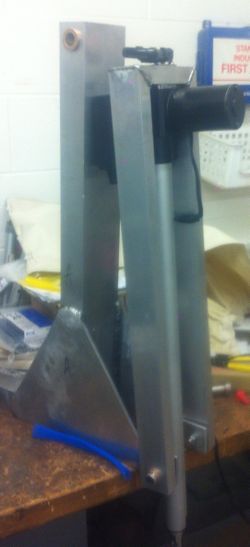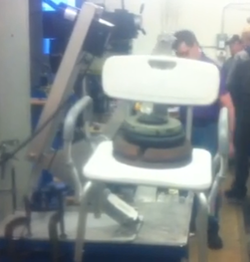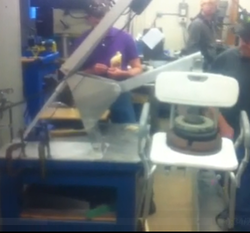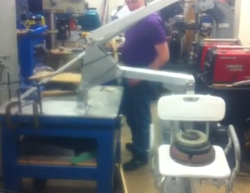Pool Lift F12
Contents |
Abstract
This project is focused on designing and building a pool lift for a disabled girl who needs an easy way to get into her swimming pool. She is currently getting using a pool ladder to get in and out, but a pool lift will provide a safer and easier means of getting in.
Team members
Tyler Fricks
Ethan Jobe
Kevin Lutz
Kevin Squires
Introduction
The pool lift is for a girl approximately 10 years old with little to no function in her lower body. Up to now she has been getting in and out of her pool via her parents picking her up and walking down a small ladder at the edge of the pool. As she continues to grow, however, this will become increasingly difficult, and so the pool lift provides a much more sensible way to allow her in the pool.
Design Specifications
The pool lift must do the following:
- Lower the child into the pool and lift her back out.
- Support the child’s upper body while lowering and raising.
- Accommodate the child as she grows.
- Lift the child over the ledge of the pool (10 inches above the decking) then lower her into the water.
- Allow for easy transfer of the child between her wheelchair and the lift.
- Rotate 90 degrees to allow for loading and unloading.
- Resist corrosion from the wet working environment.
- Be convertible from an above-ground pool to an in-ground pool (if possible).
It was determined that adapting the lift to an above-ground pool would not be sensible, as the in-ground pool will be ready by summer.
Conceptual Design
Detailed Design
Concept Evaluation
To evaluate our concepts, we scored each design in six different categories on a 1-5 scale, with some categories carrying double weight. We ranked the concepts based on manufacturability, safety, cost, transferability, compactness, and ease of use. However, when we decided that transferring from an above-ground to an in-ground pool was no longer feasible, we removed transferability from the evaluation. This resulted in a tie between concepts 2 and 4. To break the tie we first used the safety category, but as that was also a tie we used the ease of use category, and CONCEPT 4 was chosen as the basis of our designs going forward.
Analysis
Once we chose our concept, we enhanced the design and performed multiple engineering analyses. Three analyses were performed on our design. Each analysis was worked out both by hand and in Matlab, and the processes and results are shown below.
Position Analysis
Position Diagram
Velocity Analysis and Force Analysis
Velocity vs. Position Diagram
The three different lines represent different actuator speeds.
Force vs. Position Diagram
Stress Analysis
CAD Drawings
Below are the components of the pool lift, as well as the final design.
Bill of Material
Fabrication Process
Completed design
Insert pictures of the final product
